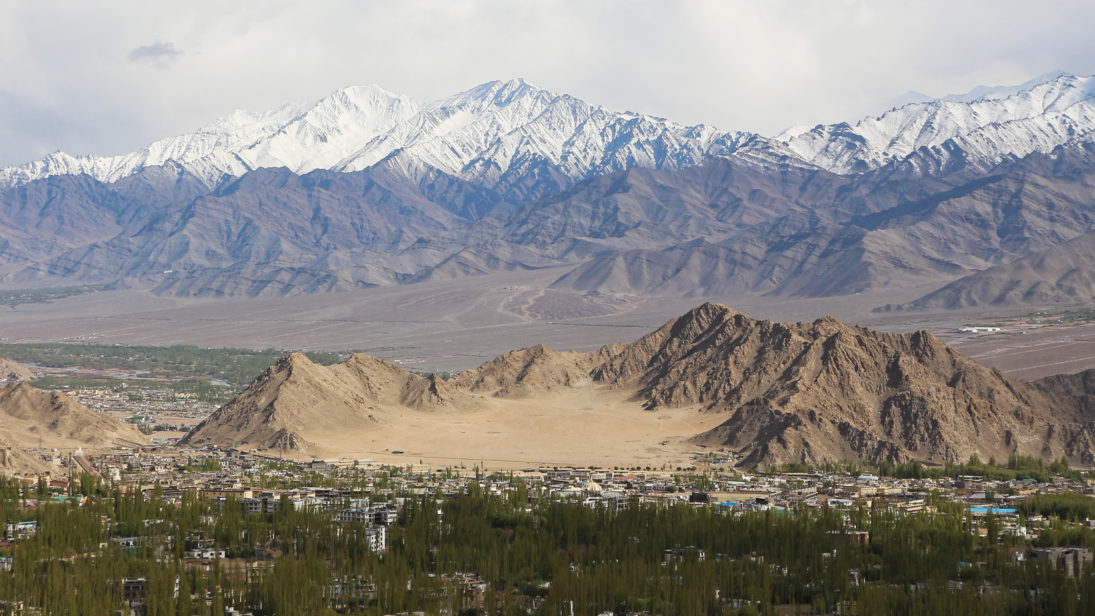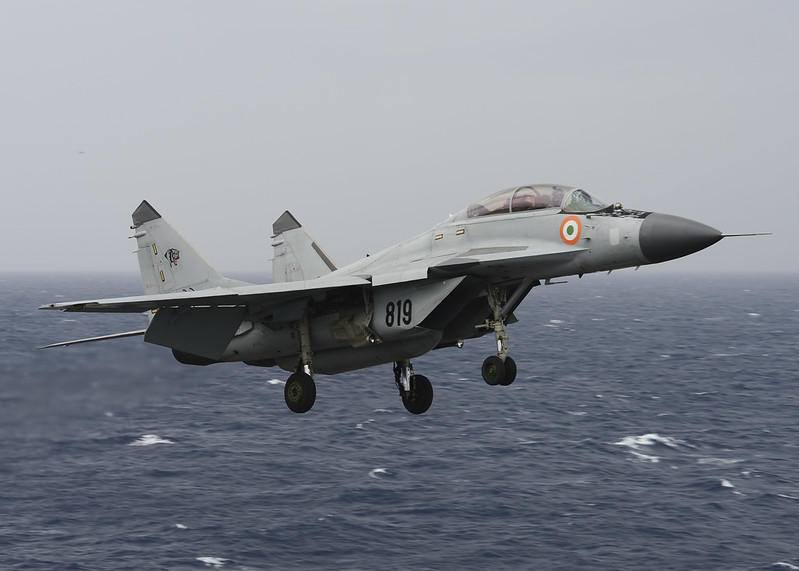Arzan Tarapore

The Ladakh crisis is not over yet. Disengagement from front-line positions, begun with fanfare in February, has since stalled. Chinese troops remain encamped in several positions on previously Indian-controlled territory and talks to dislodge them have been fruitless. Quite apart from the fait accompli on the ground, Ladakh will reverberate for years because of its effect on India’s strategic competition with China. As I argue in a recently-published paper, the crisis has exacted unequal strategic costs on the two sides. China has escaped with relatively minor costs. It was probably most concerned by the political cost of continued deterioration in relations with India – costs that were more threatened than realized, and mostly reduced with disengagement.
In contrast, the cost for India will come in the form of a weaker strategic posture against China. This is somewhat paradoxical, because India’s immediate response was to heavily reinforce its force posture on the Line of Actual Control (LAC) and rebalance its Army to manage threats from China. But in the longer term, this rebalancing – for relatively minor strategic gain – will come at the expense of India’s military modernization and its maritime expansion thousands of miles away in the Indian Ocean – which will prove far more consequential in India’s strategic competition with China.
Reacting to the Immediate Threat
With the crisis still underway, the Indian Army has made tangible and permanent commitments to reorient to the threat from China, rather than its traditional foe, Pakistan. It will retain a heavier permanent military presence in Ladakh than before the crisis – just as its presence in other remote mountainous outposts like Siachen and Kargil evolved from urgent reinforcements to permanent encampments.
Quite apart from the fait accompli on the ground, Ladakh will reverberate for years because of its effect on India’s strategic competition with China.
This has already proven to be a costly exercise. Budget documents reveal that, in 2020, the Indian Army and Air Force made unplanned expenditures, for stores and other consumable expenses, of over INR 68 billion (approximately USD 952 million), and unplanned capital outlays, for construction works and other equipment, of over INR 141 billion (approximately USD 1.97 billion). The military is unlikely to get more resources. Compared to 2020 spending levels, the military’s 2021-22 capital expenditure budget – money spent on equipment and infrastructure – is virtually flat.
The Army’s rebalancing goes further than the LAC. In December 2020, the Indian Army ordered one of the three Strike Corps facing Pakistan to prepare for a new operational role – launching offensive strikes across the LAC in Ladakh. This a rational response to India’s evolving threat environment – planning against Pakistan still attracts a disproportionate share of Indian military resources. But even with the Army’s rebalance, 22 divisions still face Pakistan, while only 14 face China (and 2 are held in a national reserve).
The conversion will represent a very significant erosion in India’s already-slim local quantitative advantage over Pakistan. Indian military strategy relies centrally on the threat of a punishing offensive against Pakistan. So, the elimination of a large portion of those strike forces may portend a long-overdue rethinking of Indian strategy towards Pakistan – a tacit recognition by the Army that its conventional deterrent against Pakistan was either not necessary or not effective. In that context the Ladakh crisis is a necessary catalyst to promote strategic adaptation, to focus more on the China threat.
Deferring Modernization and Maritime Expansion
However, the manner of that adaptation risks leaving India in a worse position in its long-term strategic competition with China. Indian strategists have recognized that building strength in the Indian Ocean would be an important pillar of competition with China. But strategy requires tradeoffs – especially given the military’s acute resource shortages. Now that blood has been shed on the LAC, the renewed ground threat commands far greater political attention than distant corners of the Indian Ocean. Priorities such as general modernization and maritime expansion into the Indian Ocean will likely continue to be deferred.

Across the military, the urgent emphasis on operations and readiness will starve the military of resources for modernization. In recent years, the share of the defense budget spent on capital outlays has shrunk, while the share spent on pensions has grown. Each of the three services urgently requires recapitalization, and each is allocated less money than it requests from the government. But the Navy has been particularly hard hit, receiving only 60% of the funds it requests for modernization.
Alongside modernization, the Indian military may continue to defer its maritime expansion, which it has repeatedly delayed and scaled down. In fact, the under-resourced Navy is struggling to even maintain its current modest force levels – its submarine fleet, for example, is shrinking because it cannot replace its ageing boats before they retire. With declining budgets and dysfunctional procurement processes, its ships lack critical capabilities. Given its capacity constraints, the Navy has drastically scaled back its earlier expansion plans.
Now that blood has been shed on the LAC, the renewed ground threat commands far greater political attention than distant corners of the Indian Ocean.
If India’s maritime expansion continues to be deferred, it will quickly lose the capability to deter or defeat Chinese coercion in the Indian Ocean region. The PLA Navy is rapidly expanding – from 2014 to 2018, it launched new shipping with more tonnage than the entire Indian Navy. It has built its first overseas military base in Djibouti, and is positioning itself for port access in several regional countries, including India’s neighbors, Pakistan, Sri Lanka, and Burma. These expanding military capabilities and footprint give China tools to coerce regional states, and operational advantages for warfighting.
The Real Prize
The choice for India is an invidious one. The threat on the land border is real and immediate; and India correctly judges that its crisis response will shape the future of the bilateral relationship. Delhi cannot afford to be seen, in Beijing or across the region, to capitulate. But equally, it should draw a distinction between managing the current crisis and the longer-term competition. Viewing the entire competition through the lens of the disputed border, and maintaining a corresponding defense posture, will blind India to future risks in the Indian Ocean. Agile statecraft requires a post-crisis pivot.
Compared to the land border, swings in the balance of military power and political influence in the Indian Ocean region are more globally consequential. At the land border, the difficult terrain and more even balance of military force means that each side could only eke out minor, strategically modest gains at best. In contrast, India has traditionally been the dominant power in the Indian Ocean region and stands to cede significant political influence and security if it fails to answer the expansion of Chinese military power. China, correspondingly, stands to gain the ability to secure its critical sea lines of communication – thereby eliminating a major strategic vulnerability – and potentially decisive leverage in its strategic competition against India.
Viewing the entire competition through the lens of the disputed border, and maintaining a corresponding defense posture, will blind India to future risks in the Indian Ocean.
The sheer size and complexity of the Indian Ocean region offers China a wide menu of new options to degrade India’s influence, threaten its interests, and pressure it militarily. For years China has underwritten a trenchant rival in Pakistan. But more recently it has also cultivated security partnerships in India’s other neighbors, from Sri Lanka to Bangladesh to Myanmar. With its burgeoning port infrastructure and increasing tempo of naval operations, China has gained an unprecedented ability to encircle India, threatening it in multiple domains and theatres simultaneously. Gaining a competitive advantage in the Indian Ocean, therefore, is the real prize – a far more strategically significant threat to Indian power than more heavily militarized and violence-prone LAC.
New Delhi’s partners, such as the United States, have sought to deepen strategic relations with it on the premise that a capable and likeminded India would, of its own volition, counterbalance China’s military expansion into the Indian Ocean. An India that is, conversely, newly recommitted to focusing on its land border with China is less likely to take on an enlarged security role in the Indian Ocean.
Partners would doubtless be encouraged by New Delhi’s newfound willingness to deepen cooperation with the Quad. Since the start of the Ladakh crisis, India has welcomed Australia into the Malabar naval exercise, agreed to a stand-alone ministerial meeting, and a leaders’ summit. These are a strong signal of India’s political commitment to working with its partners. But Quad meetings – and even novel policy action like the Quad’s vaccine initiative – are so far limited to political signaling only. They do not themselves add to the Quad’s ability to deter or counter Chinese military coercion, and do not signify a changed Indian military commitment to the Indian Ocean.
The Ladakh crisis’ effects are not predetermined; India has agency. New Delhi may yet survey the new strategic reality and understand the risks of doubling down on the LAC and choose instead to direct greater attention to the Indian Ocean region. But in terms of tangible resources and entrenched organizational preferences, early indications suggest that a more heavily militarized and violence-prone LAC will be the crisis’ central strategic legacy – and its effects are largely negative for India’s competition with China.
No comments:
Post a Comment